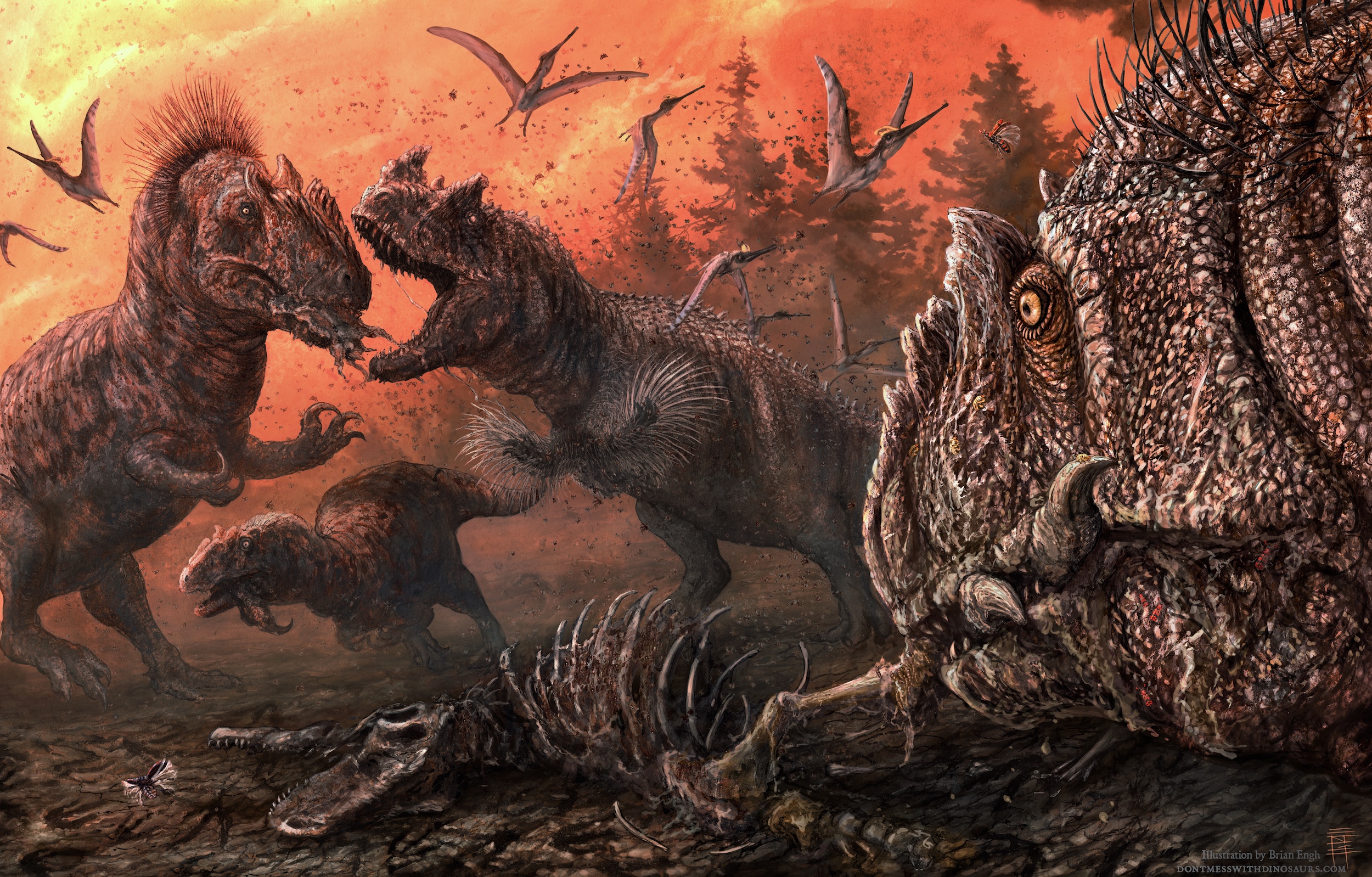Allosaurus cannibalized its own kind, grim new fossils reveal
For these Jurassic predators, cannibalism was 'definitely on the table' in desperate times, researchers say.

Scientists have discovered rare fossil evidence of dinosaur cannibalism in a large quarry in Colorado.
In a new study published today (May 27) in the journal PLOS ONE, researchers examined dinosaur bones from the Mygatt-Moore Quarry near the Utah-Colorado border, paying close attention to any bite marks that were present. Many bones bore the bites of theropod dinosaurs (a large group of bipedal carnivores). In some cases, the team wrote, both the biter and the bitee were of the same genus — the predatorial Allosaurus — providing some "extremely rare" fossil evidence of dinosaur-on-dinosaur cannibalism.
According to lead study author Stephanie Drumheller, it's likely that the predators were driven to eat their own dead as a last resort during desperate times.
"Big theropods like Allosaurus probably weren't particularly picky eaters, especially if their environments were already strapped for resources," Drumheller, a professor of paleontology at the University of Tennessee, Knoxville, said in a statement. "Scavenging and even cannibalism were definitely on the table."
Related: 'Reaper of death,' newfound cousin of T. rex found in Canada
The Mygatt-Moore Quarry contains thousands of dinosaur bones dating to the late Jurassic period, roughly 150 million years ago. During its best days, the quarry was a lushly vegetated home to many large dinosaur species, including the long-necked Apatosaurus and the bipedal carnivore Allosaurus. But at some point, the new study suggests, the area fell on hard times, forcing local carnivores to scavenge for scraps of meat from the picked-over remains of dead dinos.
In their new study, the authors looked for bite marks on 2,368 dinosaur bones from the quarry; the width, depth and pattern of the bite marks helped the team determine what sort of dinosaur had sunk its chompers into each chunk of prey. Of these, 684 specimens, or 29%, bore at least one theropod bite mark. Many of those marks were clearly made by serrated teeth, the authors wrote, suggesting Allosaurus (the most common theropod among the quarry's fossils) did most of the biting.
Get the world’s most fascinating discoveries delivered straight to your inbox.
While these predators tended to nosh mostly on herbivores, 17% of their bite victims were also theropods, including some fellow Allosaurus specimens — making this the first plausible evidence of Allosaurus-on-Allosaurus cannibalism ever detected.
Strangely, though, most of the examined bite marks didn't appear to be killing blows. In fact, more than half of all the marks were found on boney, meat-scarce parts of the victim's body, including fingers, toes and spinal columns. The theropods that bit them weren't hunting for prime meat, the authors suggested — they were scavenging for scraps.
In conclusion, the researcher wrote, these fossils tell a story of desperate carnivores that quite literally picked the meat off their prey's bones, forced to raid already-decomposing corpses for whatever little meat was left. Apparently, it didn't matter if those corpses were part of the predator's own family.
- Gory guts: Photos of a T. rex autopsy
- In images: Tyrannosaur trackways
- Image gallery: Tiny-armed dinosaurs
Originally published on Live Science.
OFFER: Save 45% on 'How It Works' 'All About Space' and 'All About History'!
For a limited time, you can take out a digital subscription to any of our best-selling science magazines for just $2.38 per month, or 45% off the standard price for the first three months.

Brandon is the space / physics editor at Live Science. With more than 20 years of editorial experience, his writing has appeared in The Washington Post, Reader's Digest, CBS.com, the Richard Dawkins Foundation website and other outlets. He holds a bachelor's degree in creative writing from the University of Arizona, with minors in journalism and media arts. His interests include black holes, asteroids and comets, and the search for extraterrestrial life.



